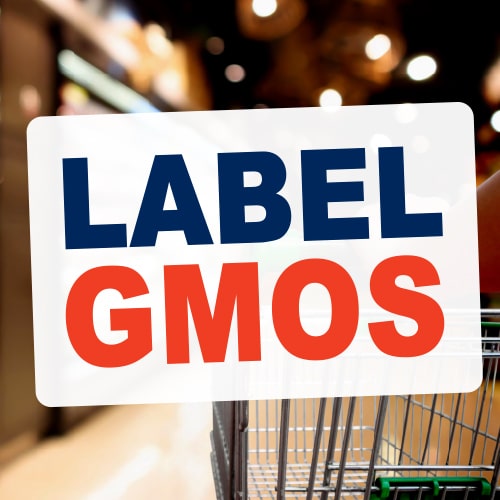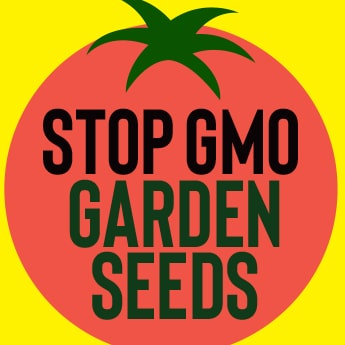Désolé, la version française de cette page ne peut être offerte pour le moment.
Comments submitted to the Competition Bureau re: Bayer-Monsanto merger
Submitted to Canada’s Competition Bureau
by the Canadian Biotechnology Action Network and Vigilance OGM, September 15, 2016
We are writing to ask the Competition Bureau to examine the possible impacts of a merger between companies Bayer and Monsanto in the seeds and pesticides markets, and, in particular, to investigate the impacts on Canadian farmers and the Canadian farm economy. We have grave concerns about the consequences of this merger, and of related merger activity in these sectors.
This merger could further increase the price of seed, decrease choice in the marketplace for Canadian farmers, and stifle research and development. These three impacts are the generally anticipated consequences of corporate consolidation in most sectors and observed trends in the seeds market over the past two decades in Canada and the US already point to these particular impacts.
The level of corporate consolidation in the global seeds and pesticides market is already extremely high. Monsanto is the world’s largest seed company and dominates the global market for genetically engineered crops. In 2013, Monsanto controlled 26% of the global commercial seed market, and 8% of the agrochemical market. Bayer controlled 3% of the seed market and 18% of the agrochemical market.[1] Bayer and Monsanto are two of six seed and agrochemical companies that together control 63% of the global commercial seed market and 75% of the pesticides market.[2]
The level of consolidation in these markets will dramatically increase with the approval of a Bayer-Monsanto merger and two other significant and related mergers that have recently been negotiated. Dow and Dupont agreed to merge in 2015, and earlier this year, Chinese company ChemChina bought Syngenta. If these three mergers go ahead, the resulting three companies would control almost 61% of global commercial seed sales and more than 65% of global pesticide sales.[3] This would create an untenable situation for Canadian farmers, and for the Canadian and global food system.
Corporate consolidation in the seed market over the past twenty years has been driven, in part, by corporate interest in genetic engineering and the potential profits offered by gene patents in particular. In the 1980s, Monsanto began to transform itself from a chemical company into a seed company by acquiring other small and large seed companies. It also invested a large amount of money into genetic engineering (also called genetic modification or GM), and in particular into developing GM herbicide-tolerant crops that were paired with its own glyphosate-based herbicide, Roundup.
Rising seed prices
Past corporate consolidation in the seed market has been accompanied by a steady rise in the price of seed. Over the past twenty years, seed prices have increased at a faster rate than most other farm inputs in Canada. Although gross farm income in Canada has increased over the past two decades, realized net income for farmers has not changed significantly.[4] Farm expenses have increased substantially, in part because of the rising prices of seeds and other inputs. Genetically engineered crops have fed into this pattern because GM seeds are significantly more expensive than non-GM seed, in Canada and other countries.[5] Because they are patented, farmers have to buy seed for GM crops every season, and cannot save and reuse this seed.
Decreasing choice in the marketplace
With increasing concentration, a few companies can also control how much and which seed varieties are made available to farmers. Monsanto and Bayer both have investments in the canola seed market and have invested heavily in genetically engineered seed. This has resulted in diminished access to non-GM canola seed. In Canada, for example, 80% of the 120 registered varieties of canola in 2000 were non-GM. By 2007, only five varieties of non-GM canola were available.[6] As non-GM varieties are phased out of the market, and because GM traits are bred into conventional crops that already have the best performance characteristics, buying expensive GM seed is often the only way that farmers can access modern, high-yielding varieties. The smaller quantities of non-GM seed that are still being produced also have fewer distribution channels.
Stagnating research and development
The major corporations that currently control the global markets for seeds and agrochemicals also largely determine the priorities and future direction of agricultural research. The dominant six companies account for 75% of all private sector agricultural research into seeds and chemicals.[7] Research from the US, found that increased industry concentration reduces biotechnology research and development (R&D intensity).[8] Large seed companies focus on developing crops that are profitable for them, but not necessarily the best for farmers or for Canadians. Companies may prioritize producing seeds that are planted on millions of acres, for example, but not invest in developing varieties that are well-suited to smaller regions with specific climatic conditions. As plant breeding increasingly shifts into private hands, farmers pay more for seeds that are less well adapted to their regions and less resilient to change.[9] There are also market implications of seed companies being, at the same time, pesticide companies: 86% of all the genetically engineered crops on the market are designed to be tolerant to brand-name herbicides.[10]
Conclusion
According to the US Department of Agriculture, structural change in the private-sector seed biotechnology industry since the mid-1990s has been even greater than in other farm input industries, including synthetic pesticides, synthetic fertilizers, farm machinery, and animal health, genetics and nutrition.[11] The impacts of this structural change in Canada need to be examined, starting with a review of the Bayer-Monsanto merger.
These and related concerns are discussed in the report “Are GM Crops Better for Farmers?” published by the Canadian Biotechnology Action Network in the 2015 project GMO Inquiry www.gmoinquiry.ca/farmers
[1] 2013 data from ETC Group December 2015, Breaking Bad: Big Ag Mega-Mergers in Play http://www.etcgroup.org/sites/www.etcgroup.org/files/files/etc_breakbad_23dec15.pdf
[2] Ibid.
[3] ETC Group. 2016. Merge-Santo: New Threat to Food Sovereignty. March 23. http://www.etcgroup.org/content/merge-santo-new-threat-food-sovereignty
[4] Research discussed in “Are GM Crops Better for Farmers?” 2015 from the Canadian Biotechnology Action Network www.gmoinquiry.ca/farmers
[5] Ibid.
[6] National Farmers Union. 2013. Farmers Before Corporate Profit. http://www.nfu.ca/sites/www.nfu.ca/files/Farmer%20Handout%20for%20April%209%20Rallies.pdf
[7] ETC Group. 2015. Mega-Mergers in the Global Agricultural Inputs Sector: Threats to Food Security & Climate Resilience, Presentation. October 30. http://etcgroup.org/content/mega-mergers-global-agricultural-inputs-sector
[8] David E. Schimmelpfennig, Carl E. Pray and Margaret F. Brennan. 2004. The impact of seed industry concentration on innovation: a study of US biotech market leaders. Agricultural Economics 30, p. 157–167.
[9] National Farmers Union. 2004. Plant Breeding in Canada: Public or Private? NFU Seeds Factsheet #3. http://www.nfu.ca/sites/www.nfu.ca/files/NFU_Seeds_Fact_Sheet_3_0.pdf
[10] James, Clive. 2015. 20th Anniversary (1996 to 2015) of the Global Commercialization of Biotech Crops and Biotech Crop Highlights in 2015. ISAAA Brief No. 51. ISAAA: Ithaca, NY
[11] Fuglie, Kieth, et al. 2011. Research Investments and Market Structure in the Food Processing, Agricultural Input, and Biofuel Industries Worldwide. United States Department of Agriculture, Economic Research Service, Economic Research Report Number 130. December.





